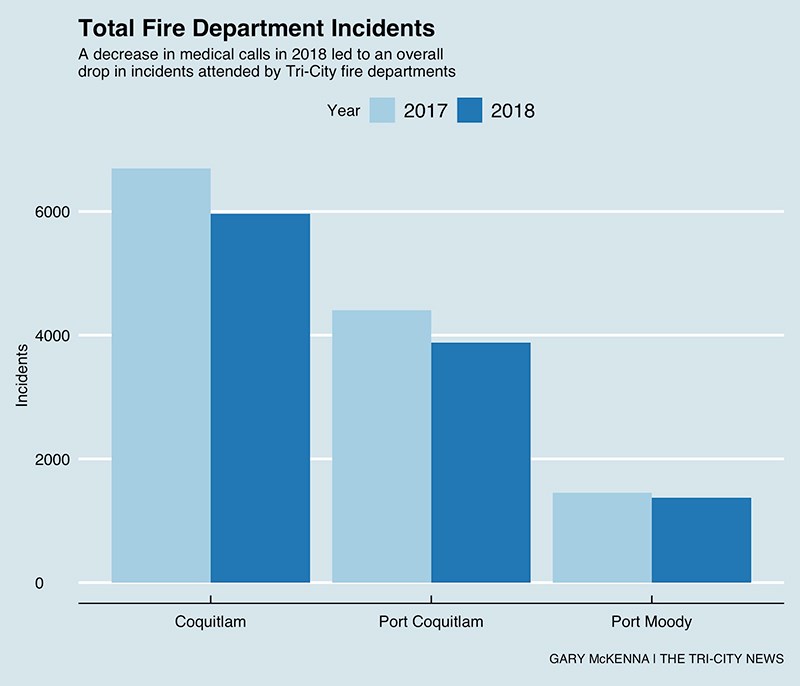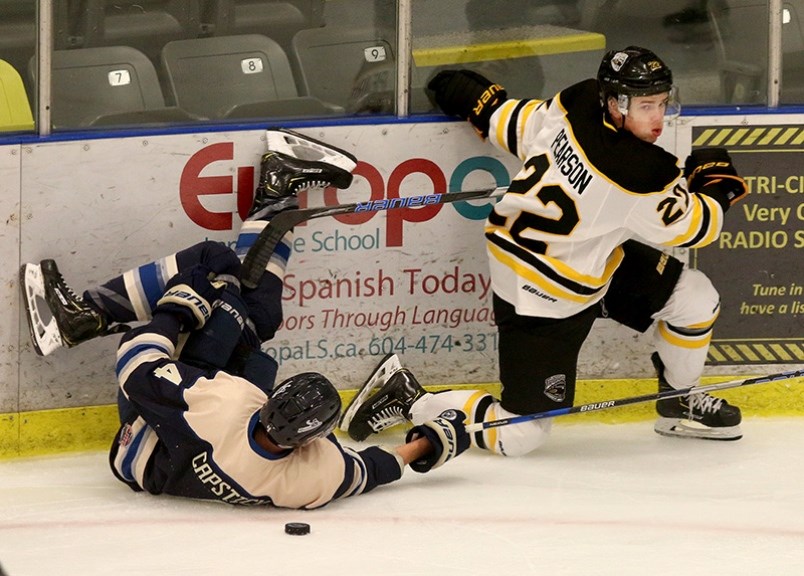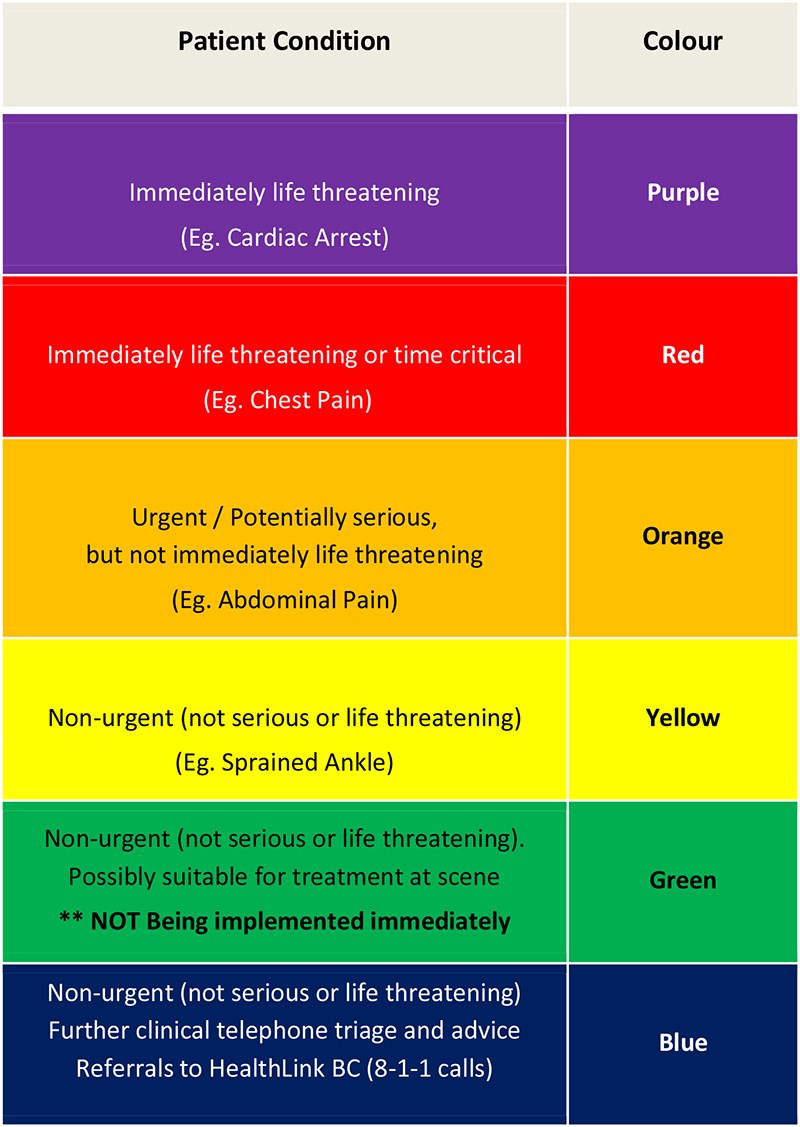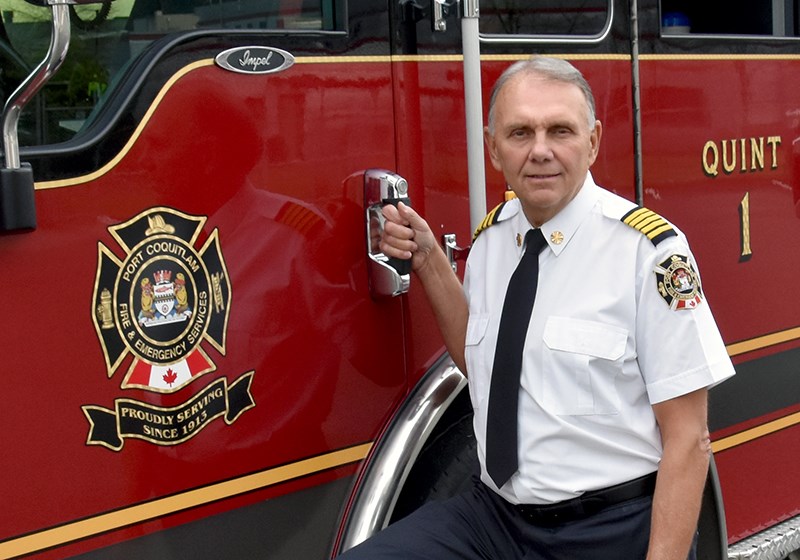A change in how B.C. Emergency Health Services (BCEHS) prioritizes 911 calls could have patients in non-life threatening situations waiting longer for first responders.
Port Coquitlam Fire Chief Nick Delmonico told The Tri-City News that under the new system, which was implemented in May, local firefighters are not being dispatched to as many medical incidents. He said often fire departments are not even notified of calls they may be able to attend quicker than an ambulance.
"It is a massive concern for us," he said.
As a result of the changes, the number of medical calls PoCo Fire and Emergency Services attended in 2018 dropped significantly, falling 25% over the previous year. The numbers have also fallen in Coquitlam (down 17%) and Port Moody (down 18.3%). That has led to an overall decrease in total incidents attended for all three departments.

On its website, BCEHS said the new model for dispatching ambulances and paramedics prioritizes the most life-threatening calls. Incidents are categorized by colour, with purple and red reserved for things like chest pains and cardiac arrest, which receive the highest level response. At the other end of the scale are green and blue, allocated for incidents that could be treated at the scene or more appropriately dealt with by calling HealthLink BC (811 calls).
It is in the middle of the classification system — orange and yellow calls — where Delmonico has the most concerns.
Orange calls are classified as urgent or potentially serious but not immediately life-threatening, like abdominal pain, while yellow calls are one step lower and reserved for non-urgent issues such as a sprained ankle. For orange calls where an ambulance is likely to take more than 10 minutes, BCEHS will notify firefighters who can then respond.
But Delmonico said how an incident is categorized and how long it will take for paramedics to arrive is left to the judgement of dispatchers, who may not be getting accurate information or the full picture from a person phoning 911.
"They seem to think the system is infallible," he said.
He cited a recent workplace accident PoCo firefighters attended involving an employee who had severed several fingers in a machine, which was categorized as an orange call. Delmonico said paramedics were initially dispatched to the scene but were redirected to a more serious call.
When firefighters were finally notified and dispatched to the scene, he said a significant amount of time had passed.
"We got there and the first aid attendant said, 'What took you guys so long?'" Delmonico said. "We looked at our [response time] and it said three and a half minutes. He said, 'We called 25 minutes ago.' The guy has been sitting there with his fingers lopped off for 20 to 25 minutes."
In some cases, Delmonico said his department is not even being informed of red-level calls.
Coquitlam Fire Chief Jim Ogloff concurred with Delmonico, noting under the new system, there is greater variability in how calls are classified. He said if a resident is in distress, firefighters have the tools and training to offer assistance while paramedics make their way to the scene.
"We want to deliver that level of service to our citizens," he said. "If we don't get the call in the first place, we don't know about it.
"There is a potential for an outcome that could be avoidable."

Cracks in the new emergency response system were on display last month when Coquitlam Express forward Danny Pearson was knocked unconscious during a hockey game against the Powell River Kings. It took 22 minutes for first-responders to arrive to tend to the 17-year-old, who was laying on the ice in front of 800 fans.
At the time, Coquitlam Deputy Chief Rod Gill said the call was likely classified as orange level and Coquitlam Fire and Rescue was only informed of the incident when a second 911 call was made specifically requesting firefighters attend. He noted fire crews were able to get to the arena within six minutes of being notified.
Gill said at the time that paramedics were likely re-routed to a more serious incident.
"This could happen two or three times potentially," he said, later adding: "It’s frustrating that we’re not assigned those calls when we know we can help."

BCEHS spokesperson Shannon Miller defended the arena response. She said at the time it was unlikely firefighters would have been notified of the incident under the old dispatch system.
"BCEHS does not notify firefighters of every call. If they are responding to a patient with a non-urgent condition, they could be tied up when we need them to respond to a life-threatening call as a first responder," she said.
In a follow up email this week, Miller said they want to hear from fire officials who believe their are problems with the dispatch system.
"If fire-rescue believe there are departures from these guidelines, or have any patient care concerns, we want to know about them so we can carry our a review of these calls," she said.
In a media release, BCEHS said it receives 140,000 calls each year that are non-urgent and estimates that more than half of these calls could be resolved without ambulance transport.
@gmckennaTC



